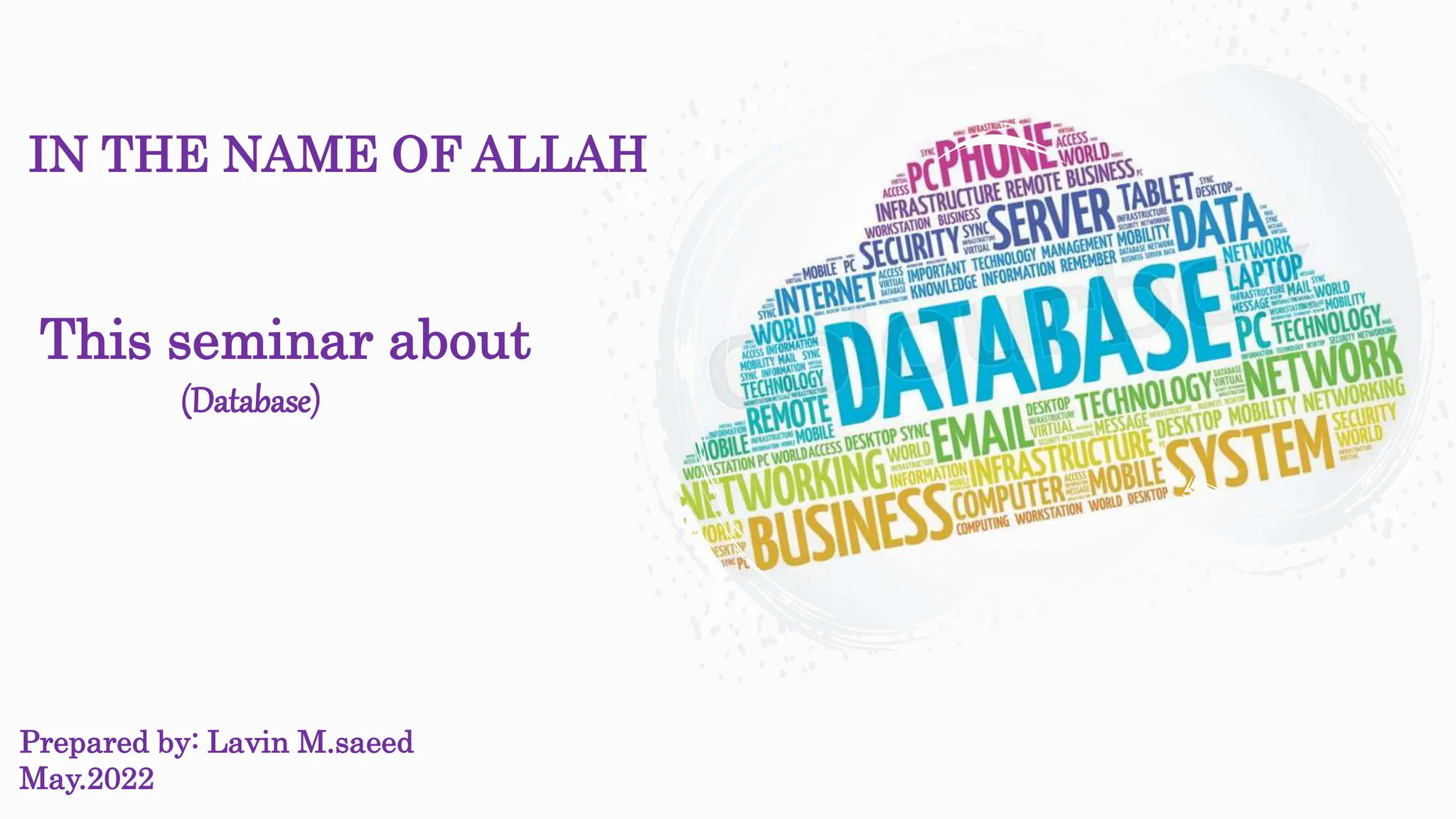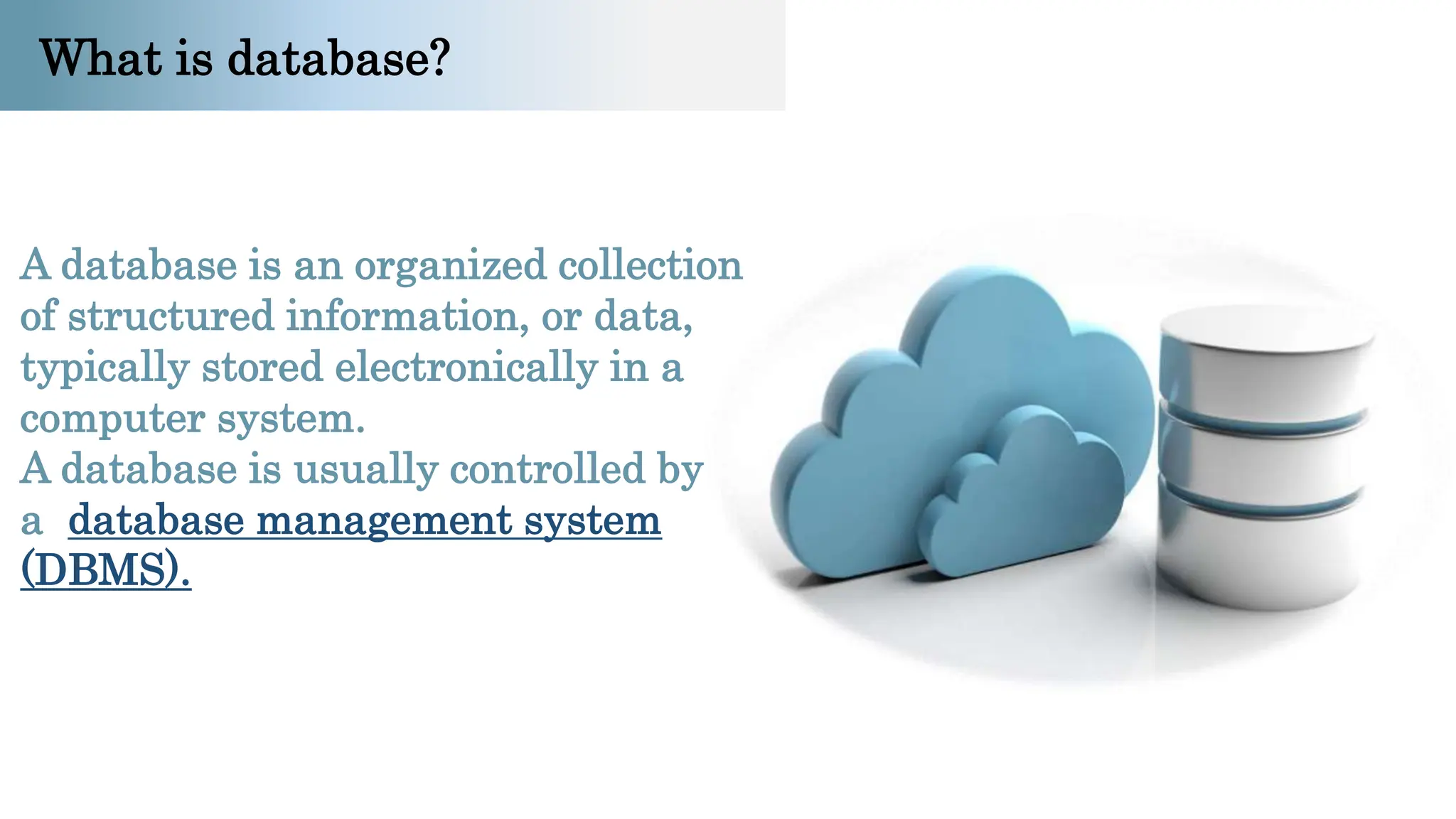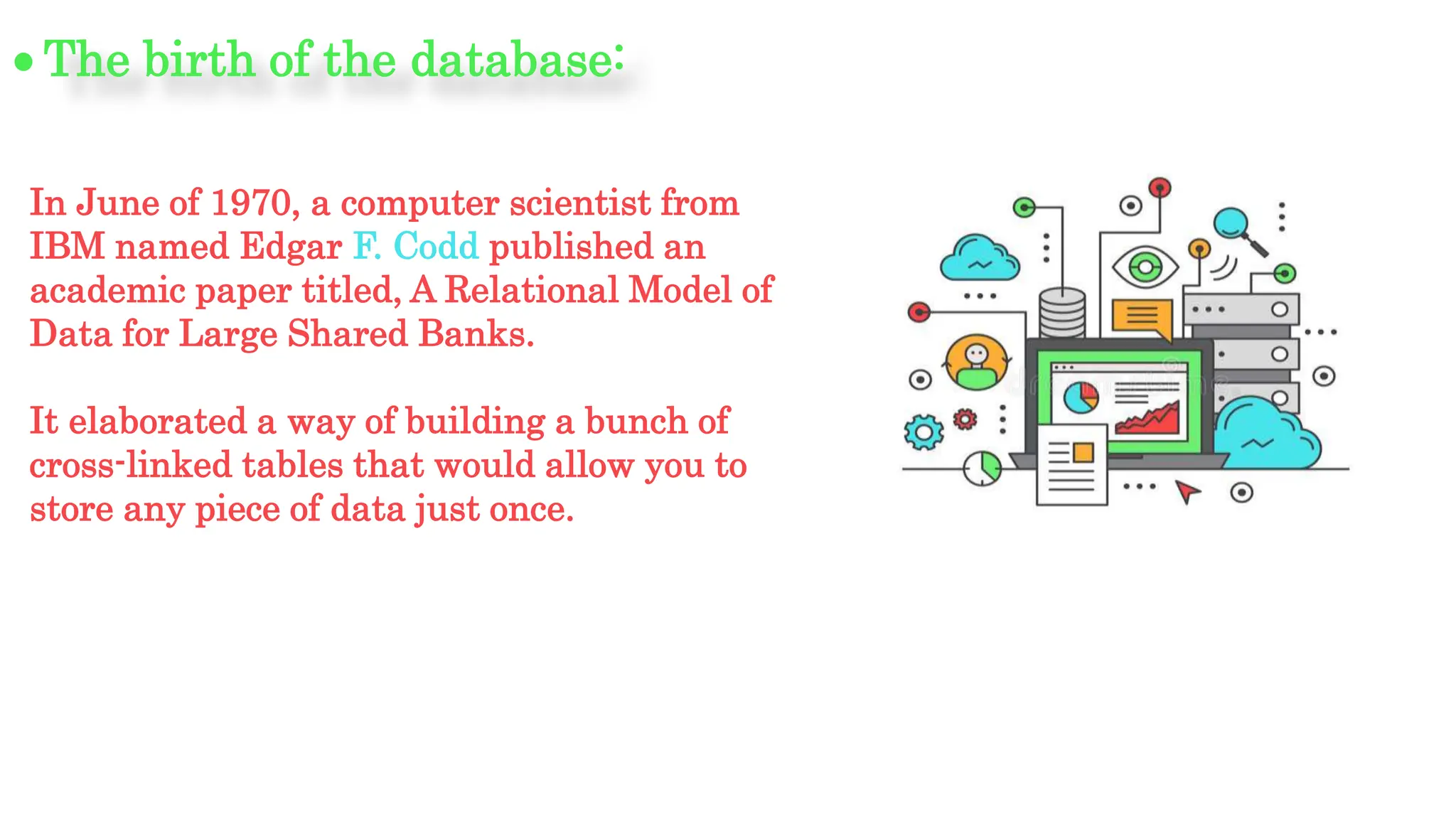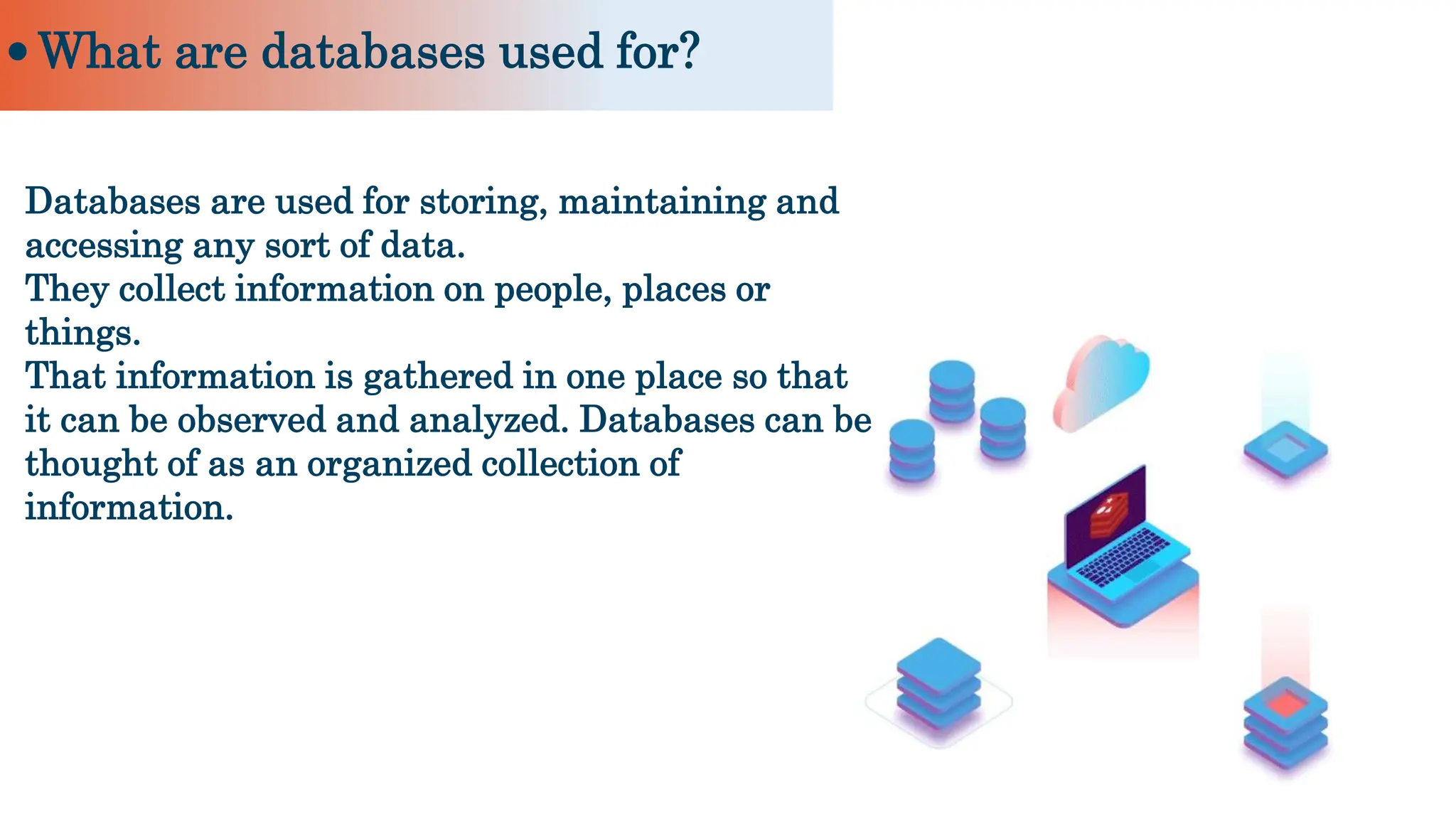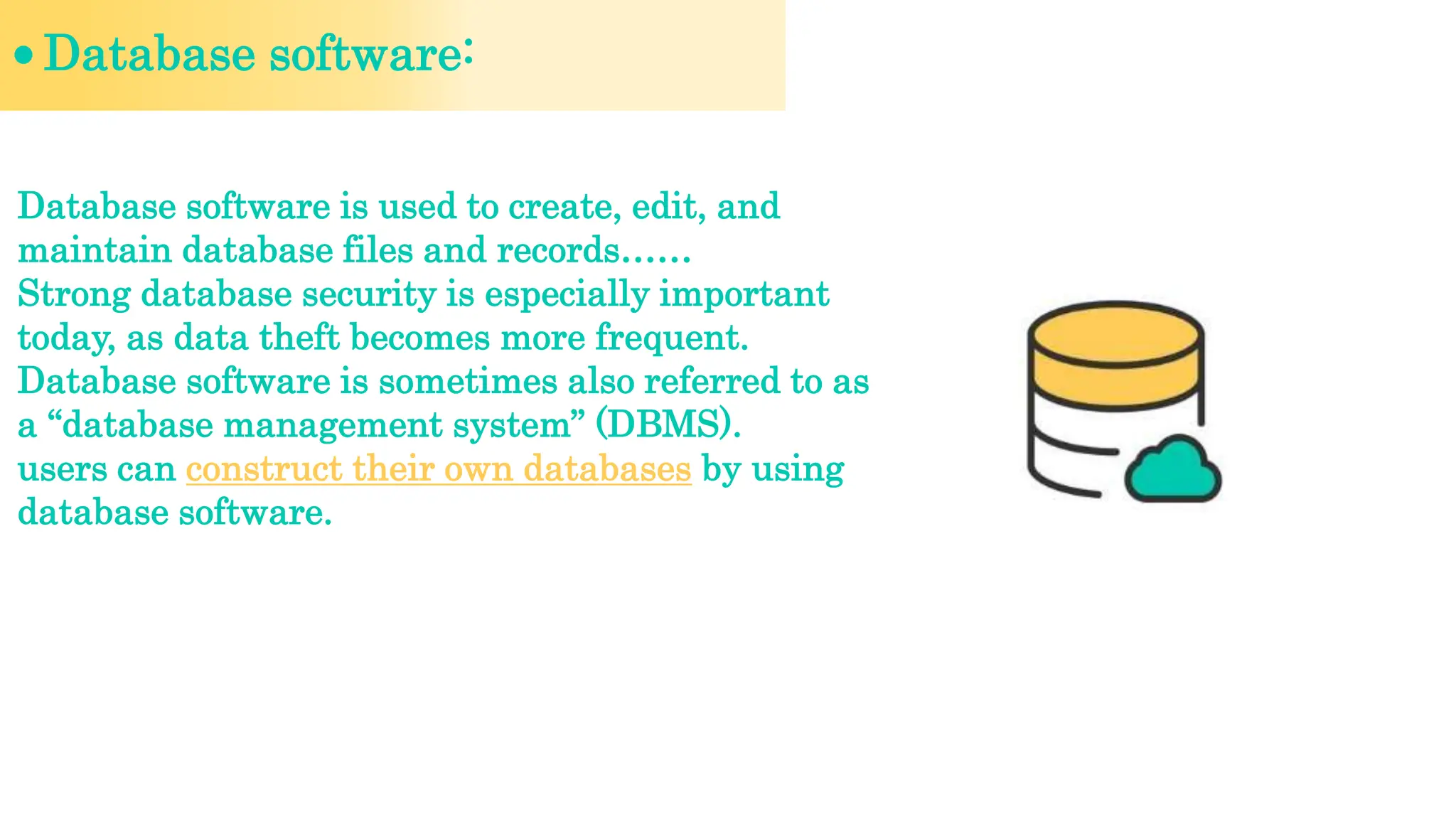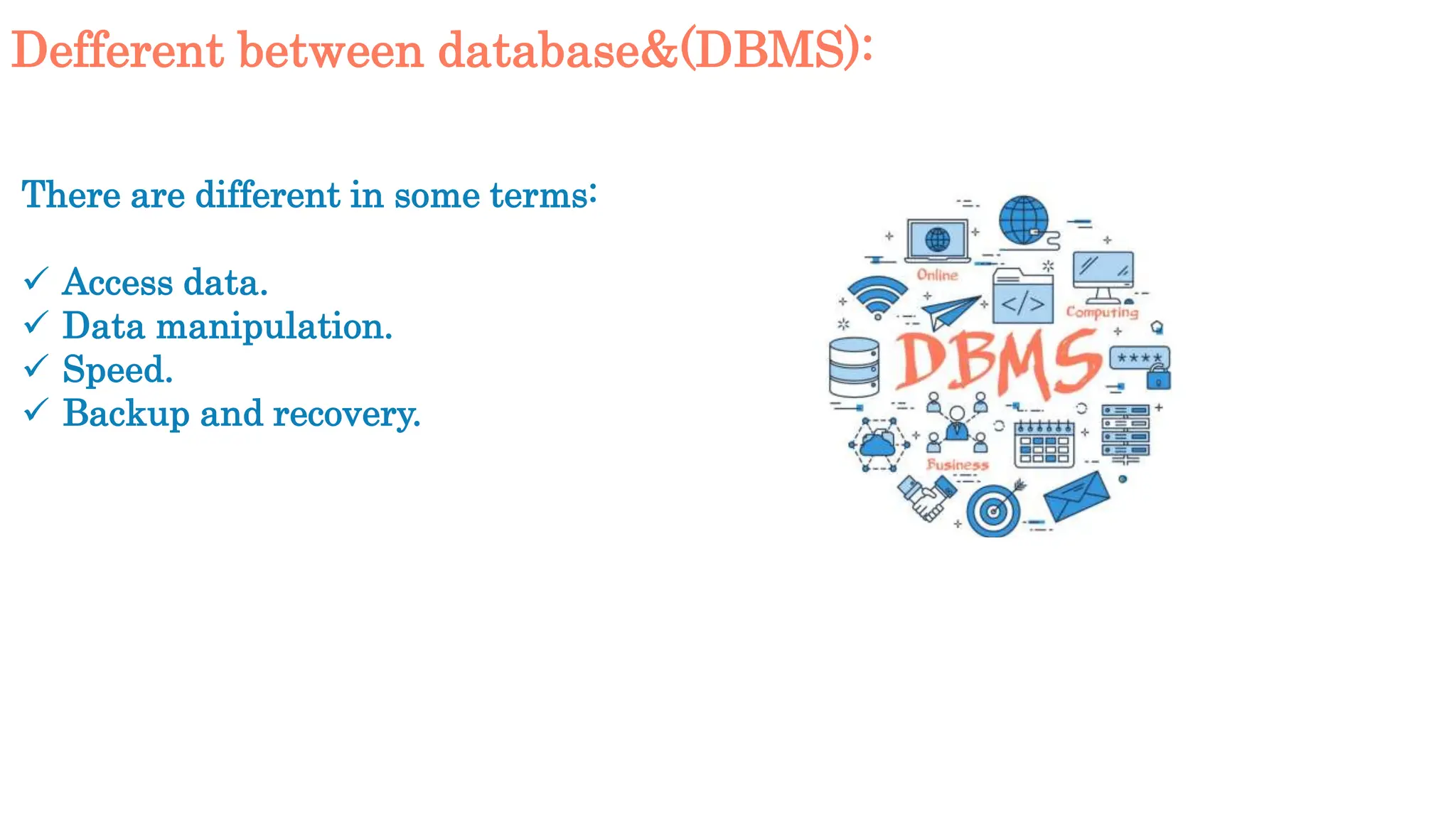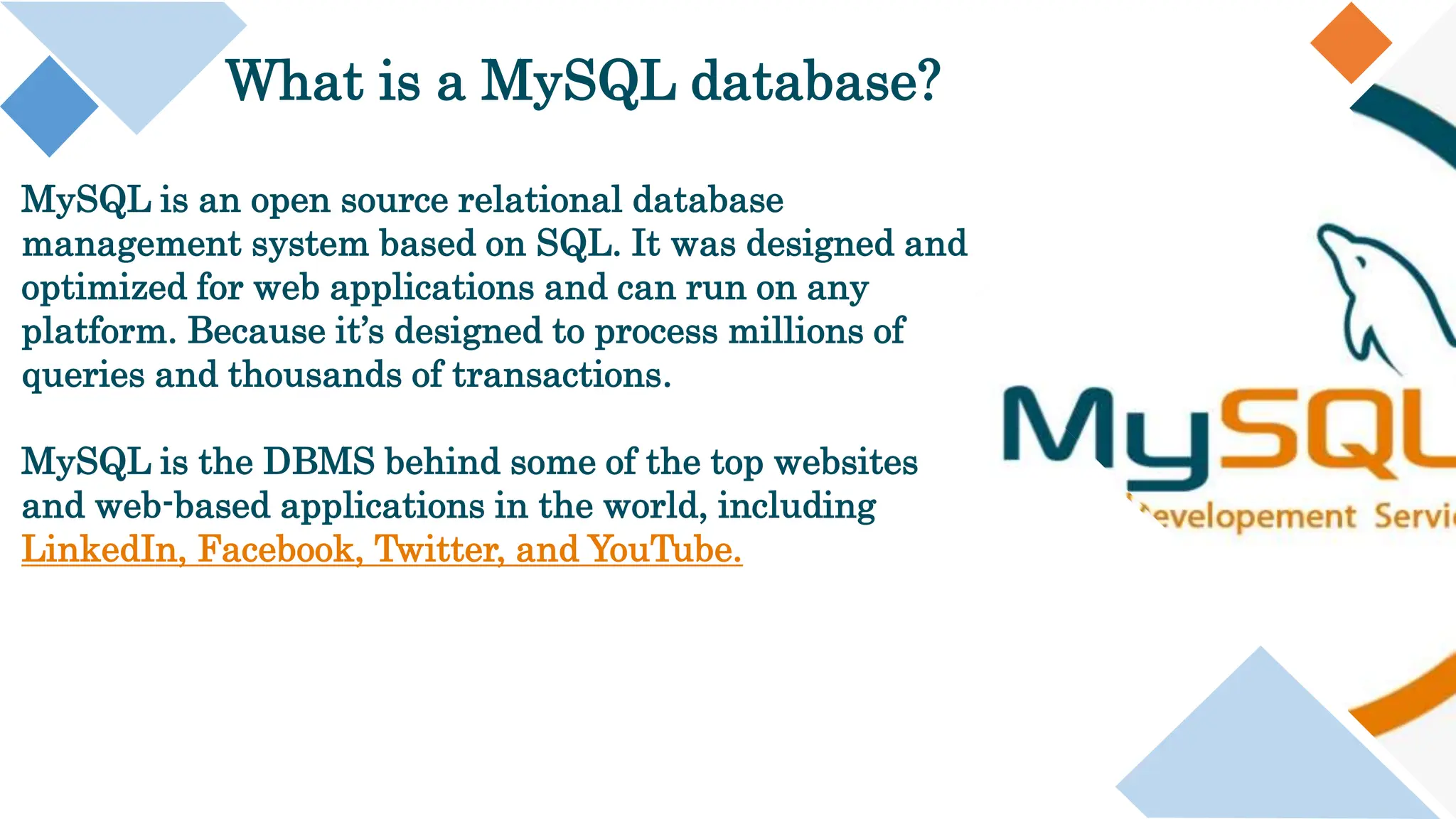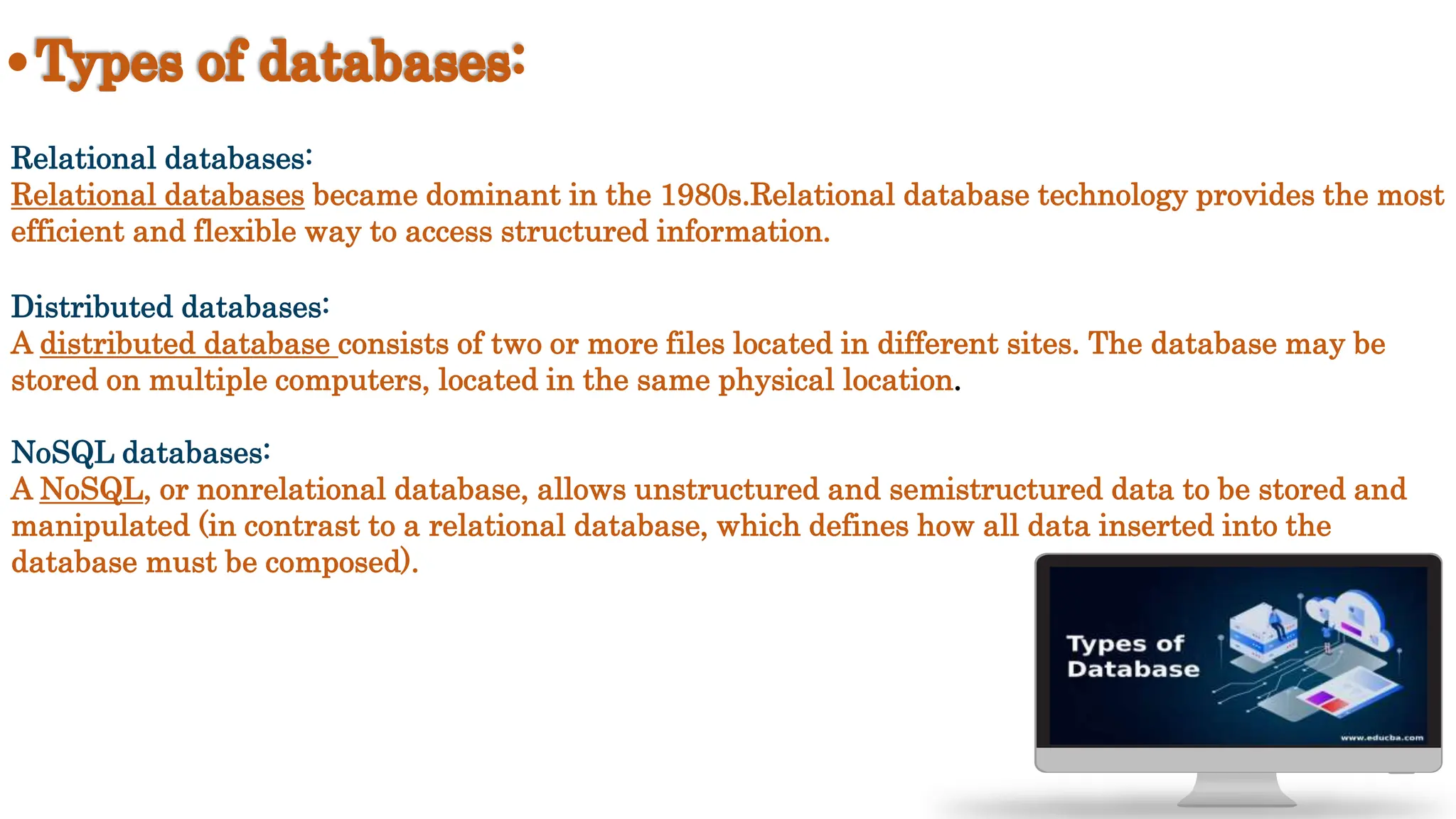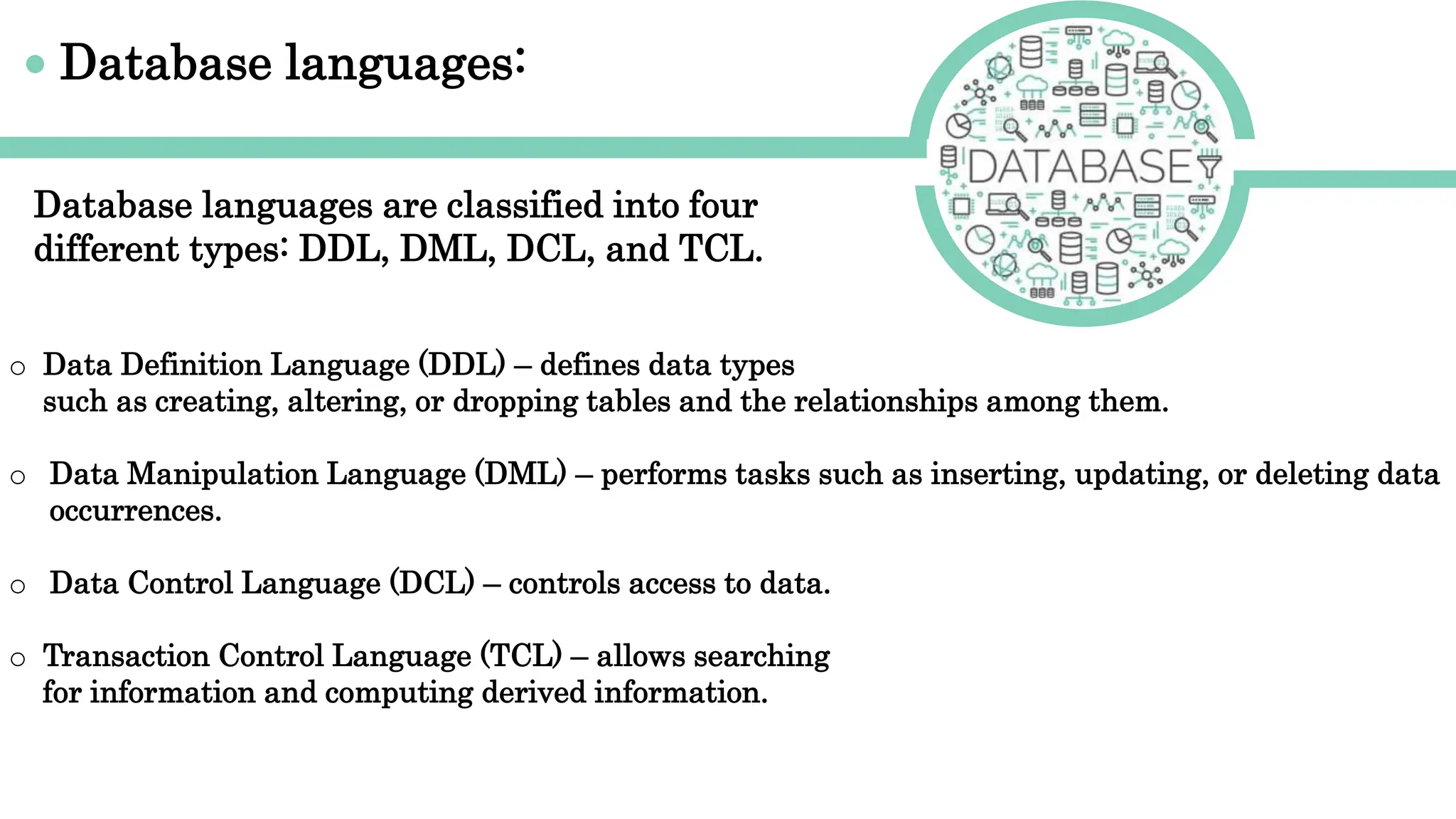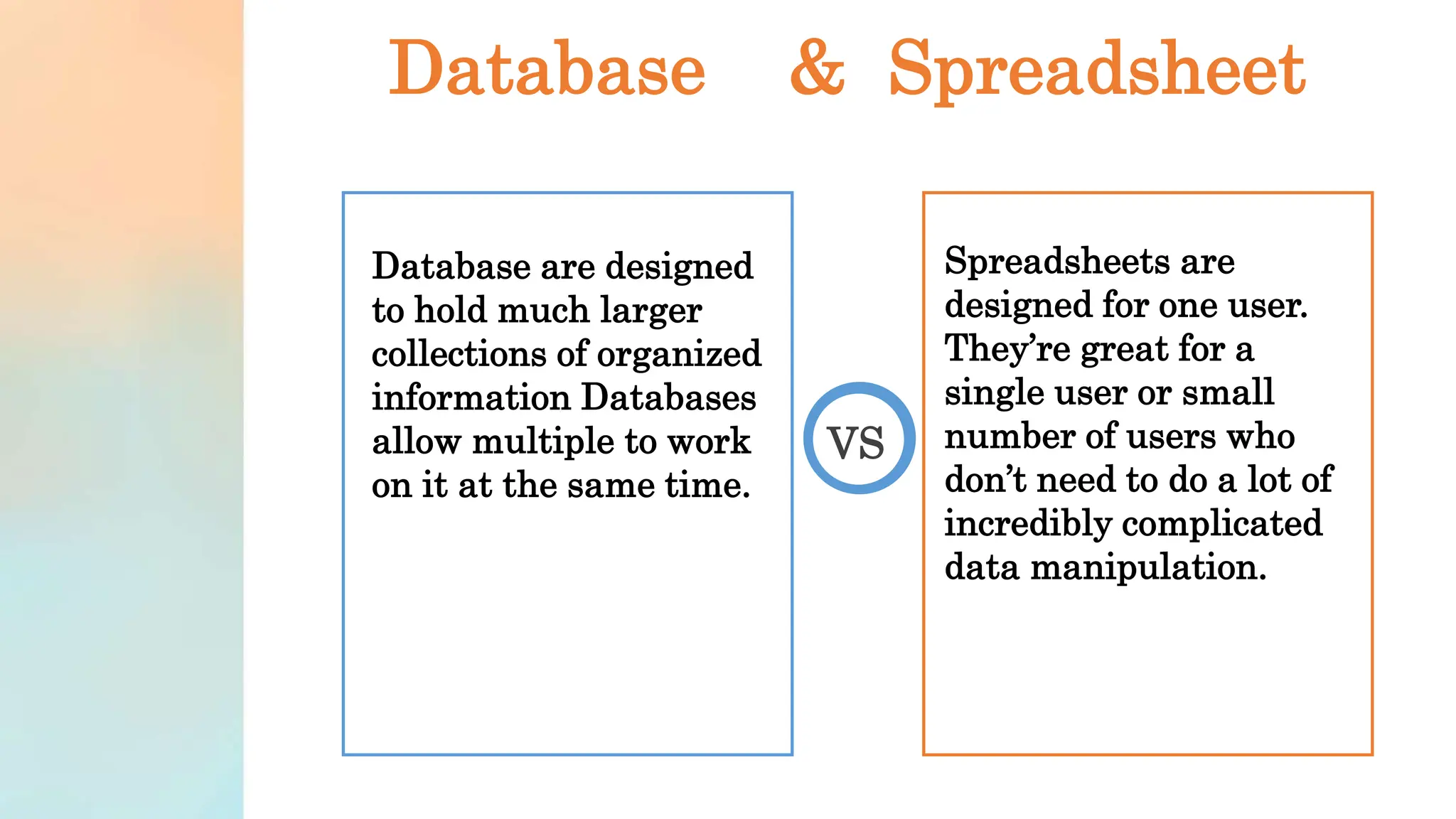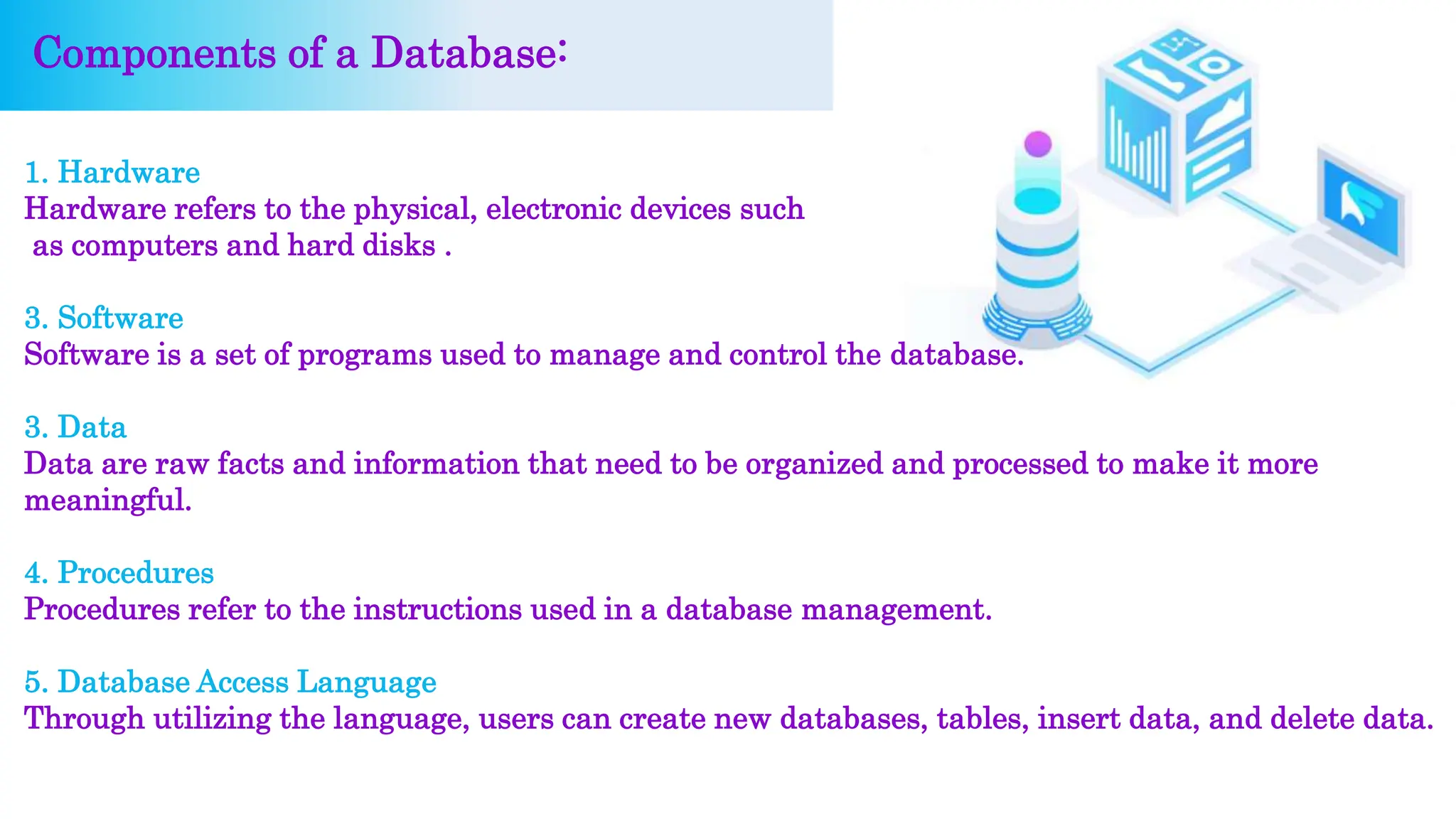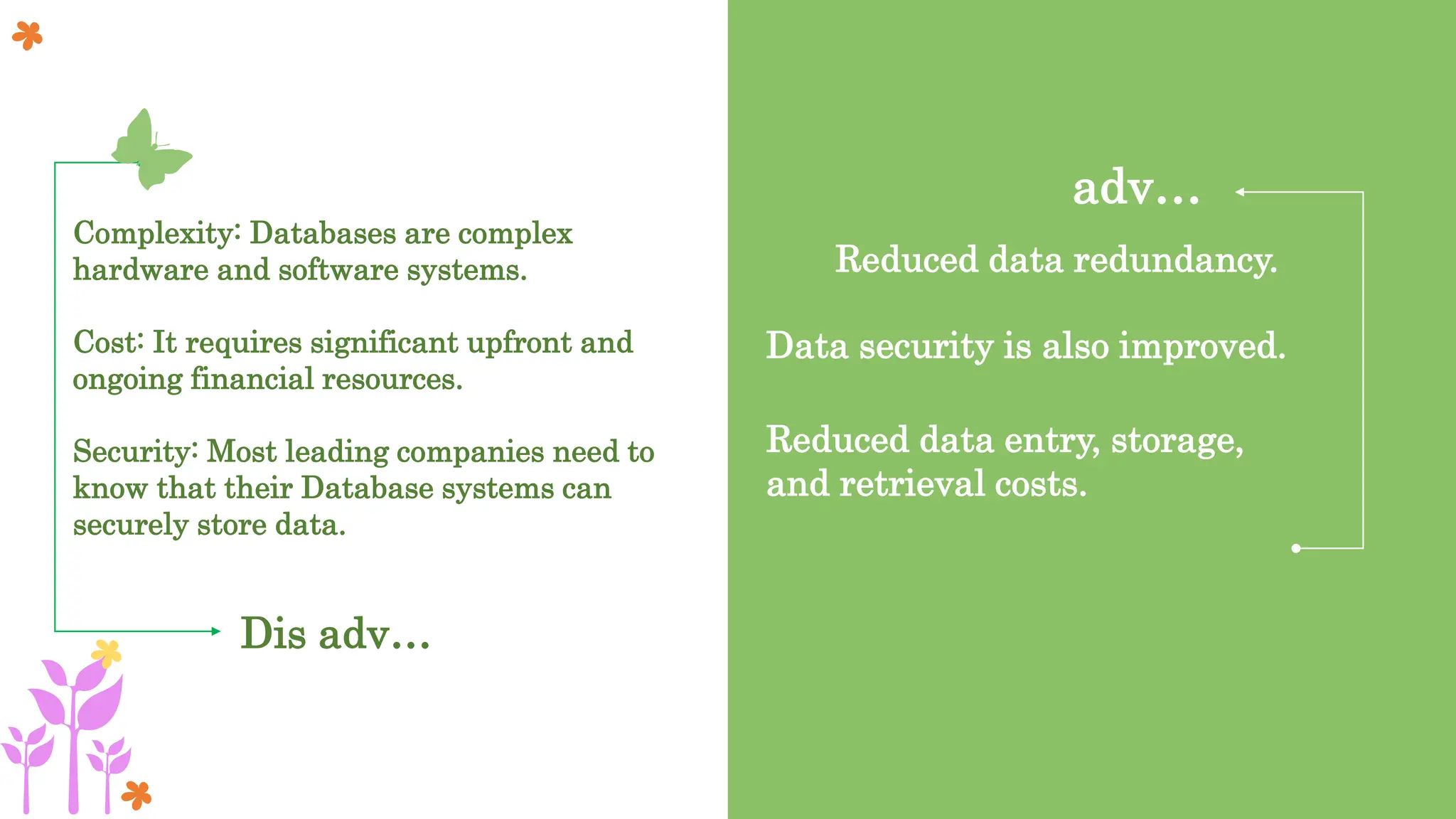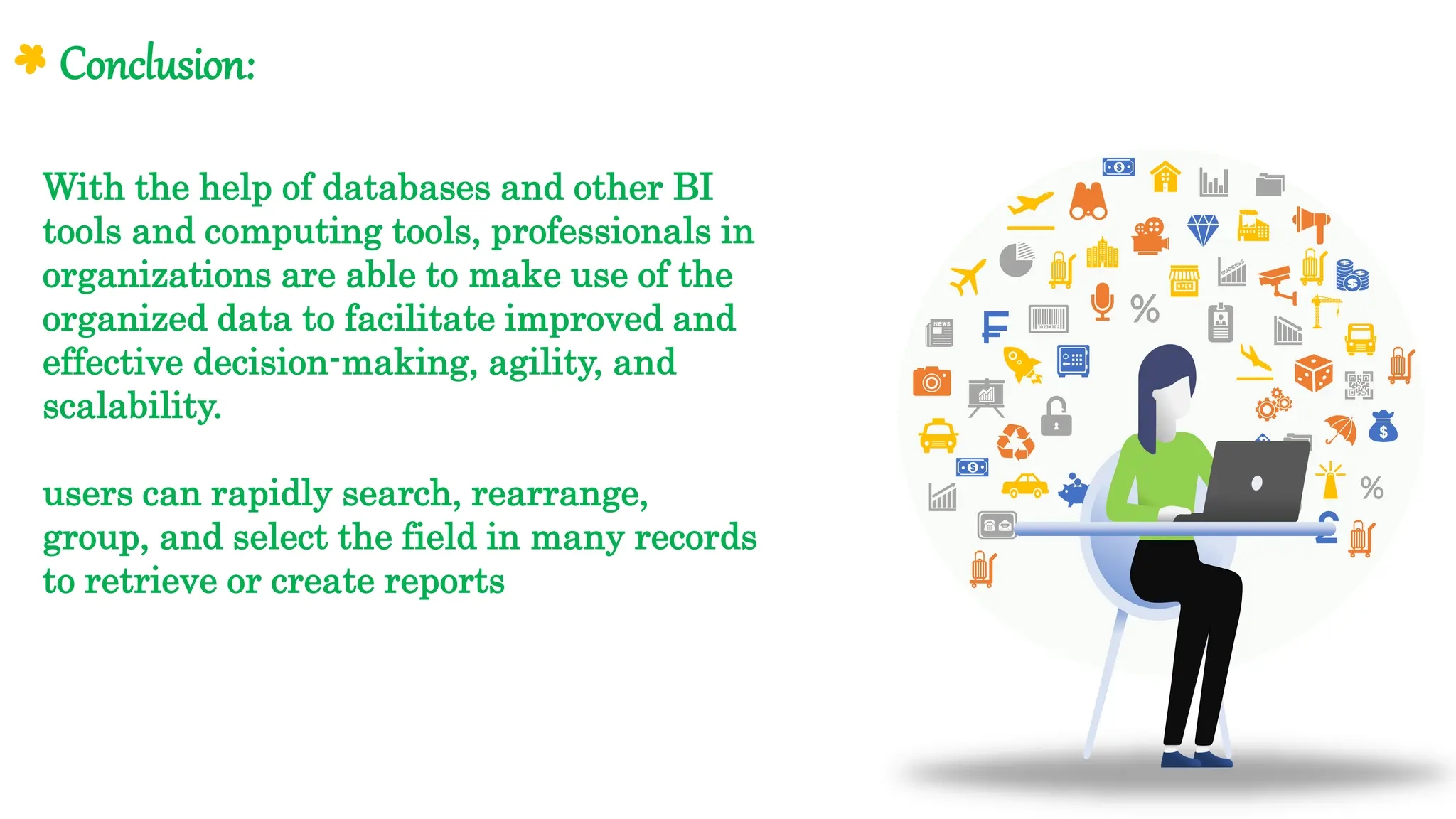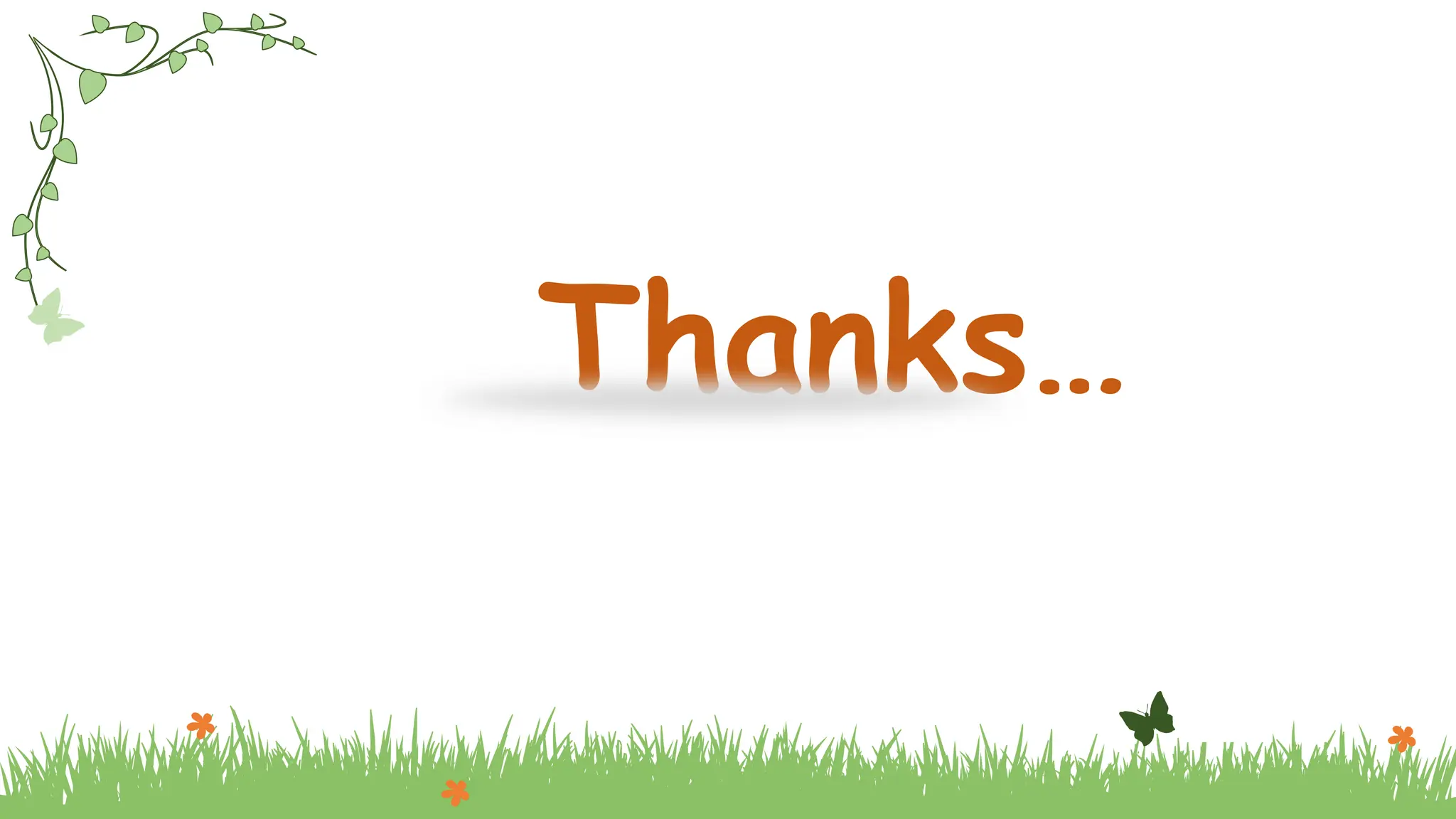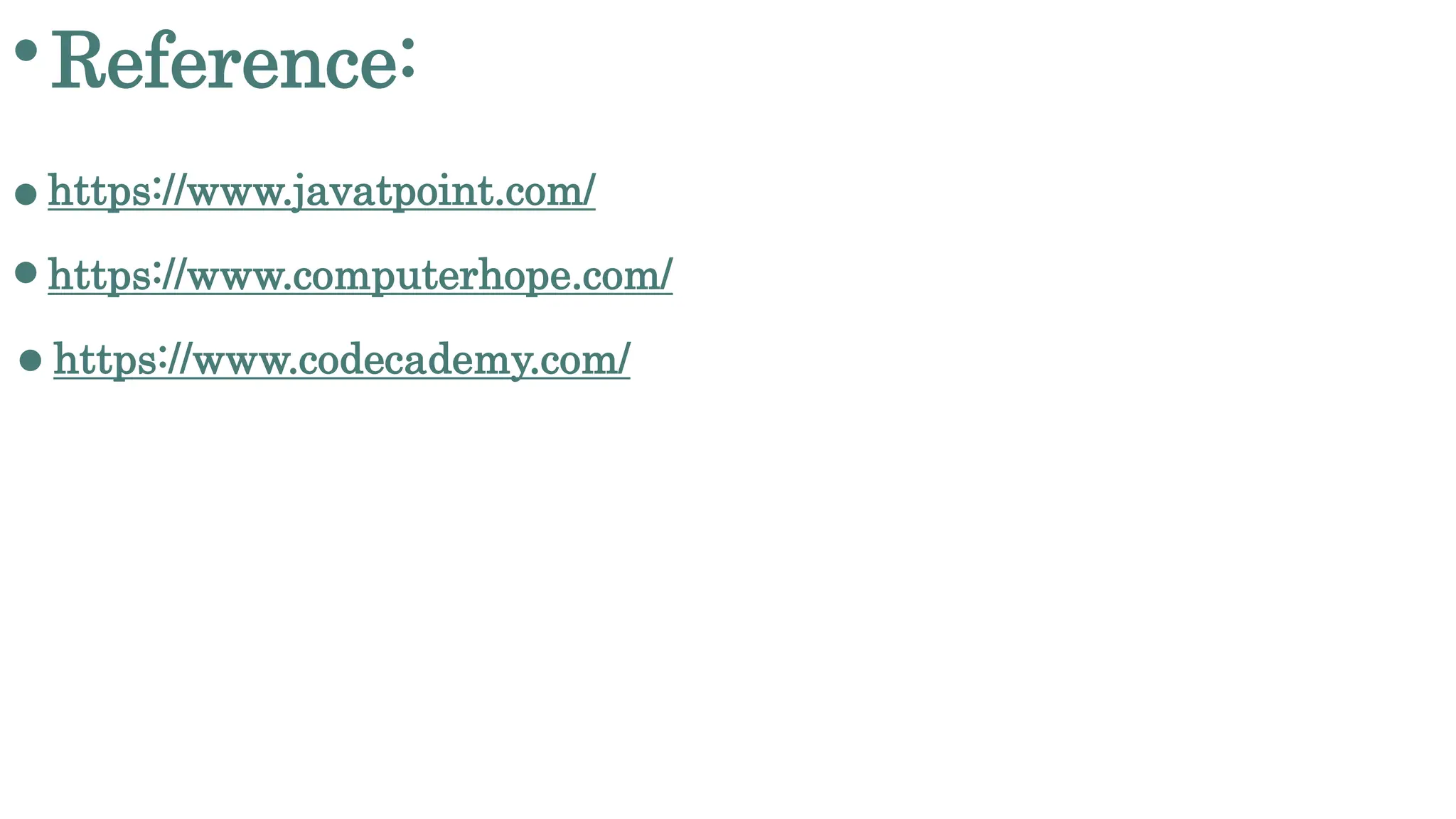Databases are organized collections of structured data that are stored electronically. The birth of modern databases began in 1970 with Edgar Codd's paper describing the relational model. Databases are used to store and analyze information like customer records or product catalogs. They allow data to be accessed and manipulated through database management system software. Key components of a database include hardware, software, data, procedures, and database languages like SQL. Benefits include reduced data redundancy and improved data security and access.
